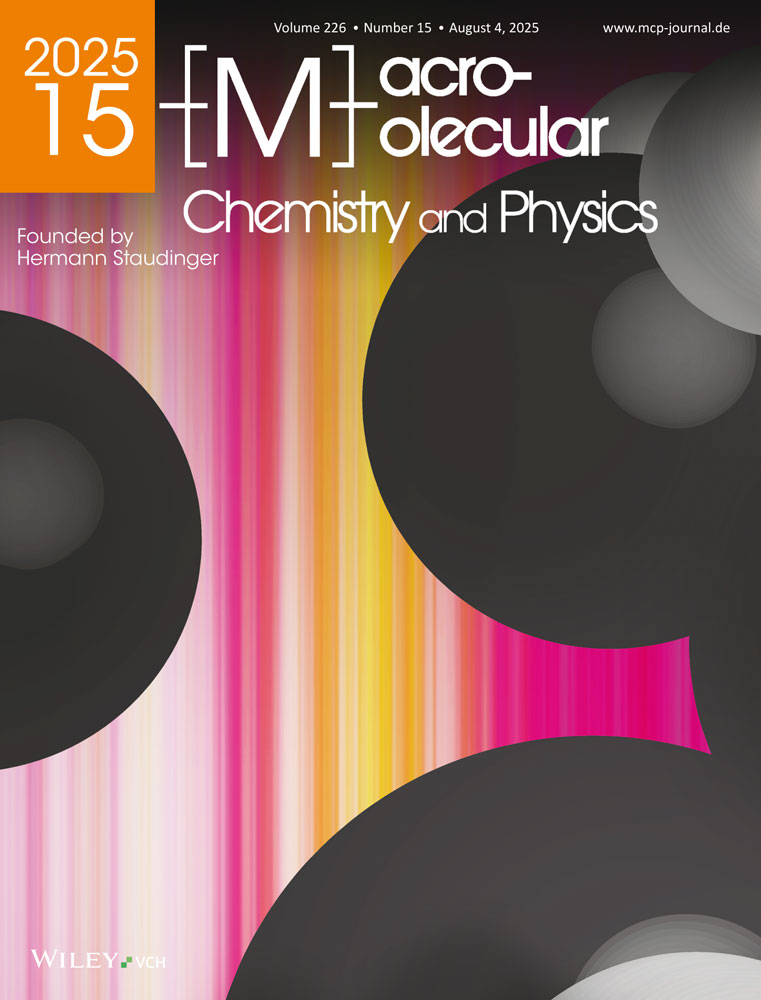Cationic polymerization of 4-ethyl-1,3-dioxolane
Abstract
enThe bulk polymerization of 4-ethyl-1,3-dioxolane, (1), was investigated at temperatures ranging from −48 to 0°C with boron trifluoride etherate and the perchloric acid/acetic anhydride binary system as initiators. At temperatures above − 20°C, liquid oligomers were obtained in poor yield, while at lower temperatures viscous polymer consisting of alternating sequences of oxy-1-ethylethylene and oxymethylene units with number average molecular weights of several thousands was produced. 1H NMR analysis of the acetal protons of the polymer on the basis of some model compounds disclosed that the bond cleavage of the monomer in the polymerization occurred nearly randomly at the two acetal C–-O bonds. This polymerization involves a monomer-polymer equilibrium. The thermodynamic parameters for the polymerization were determined from the temperature dependence of the equilibrium monomer concentrations: ΔH1c = −13,0±0,8 kJ mol−1 (= −3,1±0,2 kcal/mol) and ΔS1c = −59,4±3,8 J mol−1 K−1 (= −14,2±0,9 cal/(mol K)).
4-Isopropyl-1,3-dioxolane, (2), was found very reluctant to polymerize above − 78°C.
Abstract
de4-Äthyl-1,3-dioxolan, (1), wurde in Substanz im Temperaturbereich zwischen −48 und 0°C mit Bortrifluoridätherat und dem binären System Perchlorsäure/Essigsäureanhydrid als Initiatoren polymerisiert. Oberhalb −20°C wurden flüssige Oligomere in schlechter Ausbeute, unterhalb von −20°C dagegen viskose Polymere mit Zahlenmitteln des Molekulargewichtes von mehreren Tausend erhalten. Die Polymeren waren aus alternierenden Sequenzen von Oxy-1-äthyläthylen- und Oxymethylen-Einheiten aufgebaut. Die 1H-NMR-Analyse der Acetal-Protonen zeigte, daß die Ringöffnung bei der Polymerisation praktisch statistisch an den beiden CO Bindungen der Acetal-CH2-Gruppe erfolgt. Diese Polymerisation erfolgt über ein Monomer-Polymer-Gleichgewicht. Die thermodynamischen Parameter der Polymerisation wurden über die Temperaturabhängigkeit der Monomerkonzentrationen im Gleichgewicht bestimmt und ergaben sich zu ΔH1c = −13,0±0,8 kJ mol−1 (= −3,1±0,2 kcal/mol) and ΔS1c = −59,4±3,8 J mol−1 K−1 (= −14.2±0,9 cal/(mol K)).
4-Isopropyl-1,3-dioxolan, (2), polymerisiert bei Temperaturen oberhalb −78°C nur sehr zögernd.




